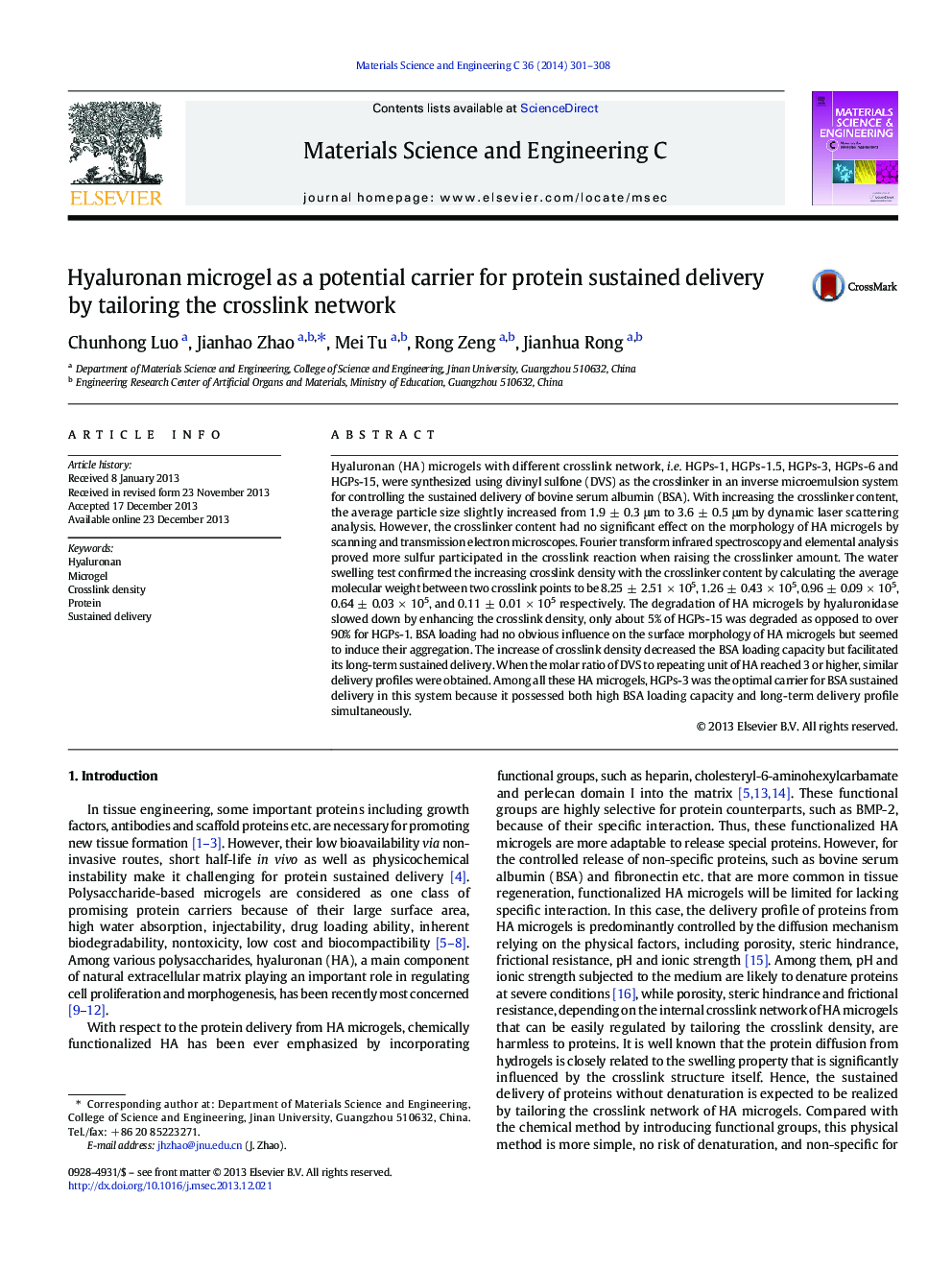| کد مقاله | کد نشریه | سال انتشار | مقاله انگلیسی | نسخه تمام متن |
|---|---|---|---|---|
| 1429250 | 1509185 | 2014 | 8 صفحه PDF | دانلود رایگان |

• HA microgels with different crosslink densities were prepared.
• The crosslinker content had little effect on the morphology and size of HA microgels.
• The crosslink density increased with the crosslinker content.
• Higher crosslink density led to lower water swelling ratio and slower degradation.
• Increasing the crosslink density decreased the BSA loading but prolonged its delivery.
Hyaluronan (HA) microgels with different crosslink network, i.e. HGPs-1, HGPs-1.5, HGPs-3, HGPs-6 and HGPs-15, were synthesized using divinyl sulfone (DVS) as the crosslinker in an inverse microemulsion system for controlling the sustained delivery of bovine serum albumin (BSA). With increasing the crosslinker content, the average particle size slightly increased from 1.9 ± 0.3 μm to 3.6 ± 0.5 μm by dynamic laser scattering analysis. However, the crosslinker content had no significant effect on the morphology of HA microgels by scanning and transmission electron microscopes. Fourier transform infrared spectroscopy and elemental analysis proved more sulfur participated in the crosslink reaction when raising the crosslinker amount. The water swelling test confirmed the increasing crosslink density with the crosslinker content by calculating the average molecular weight between two crosslink points to be 8.25 ± 2.51 × 105, 1.26 ± 0.43 × 105, 0.96 ± 0.09 × 105, 0.64 ± 0.03 × 105, and 0.11 ± 0.01 × 105 respectively. The degradation of HA microgels by hyaluronidase slowed down by enhancing the crosslink density, only about 5% of HGPs-15 was degraded as opposed to over 90% for HGPs-1. BSA loading had no obvious influence on the surface morphology of HA microgels but seemed to induce their aggregation. The increase of crosslink density decreased the BSA loading capacity but facilitated its long-term sustained delivery. When the molar ratio of DVS to repeating unit of HA reached 3 or higher, similar delivery profiles were obtained. Among all these HA microgels, HGPs-3 was the optimal carrier for BSA sustained delivery in this system because it possessed both high BSA loading capacity and long-term delivery profile simultaneously.
Journal: Materials Science and Engineering: C - Volume 36, 1 March 2014, Pages 301–308